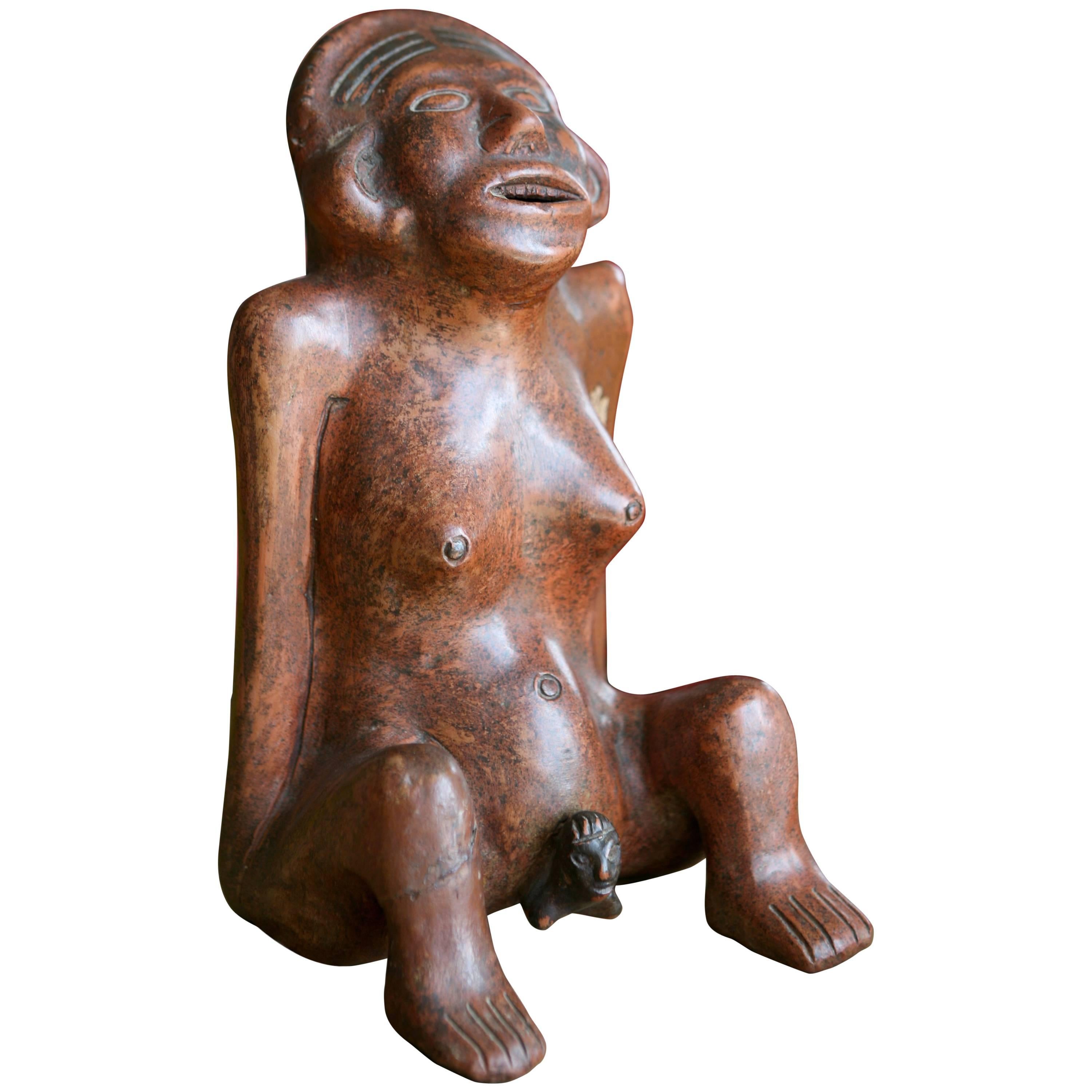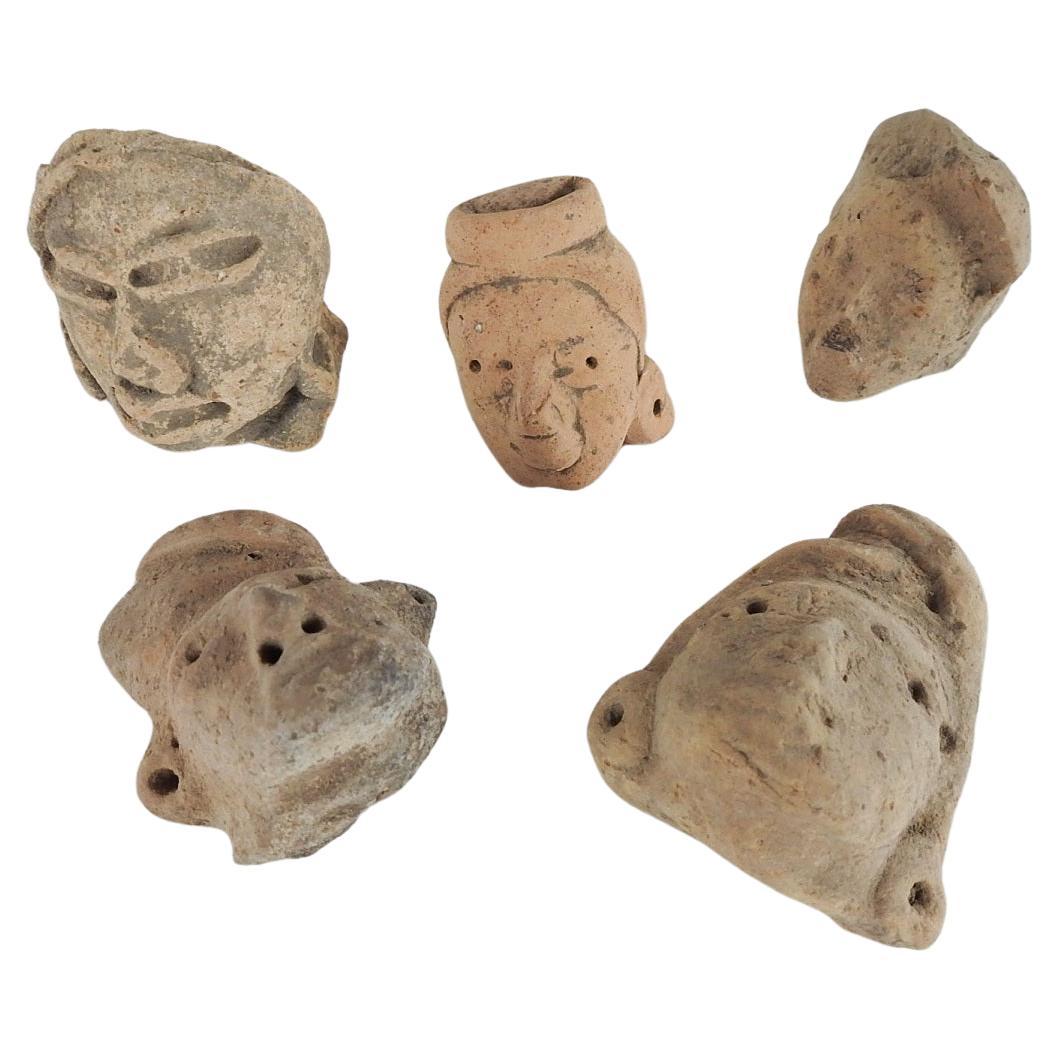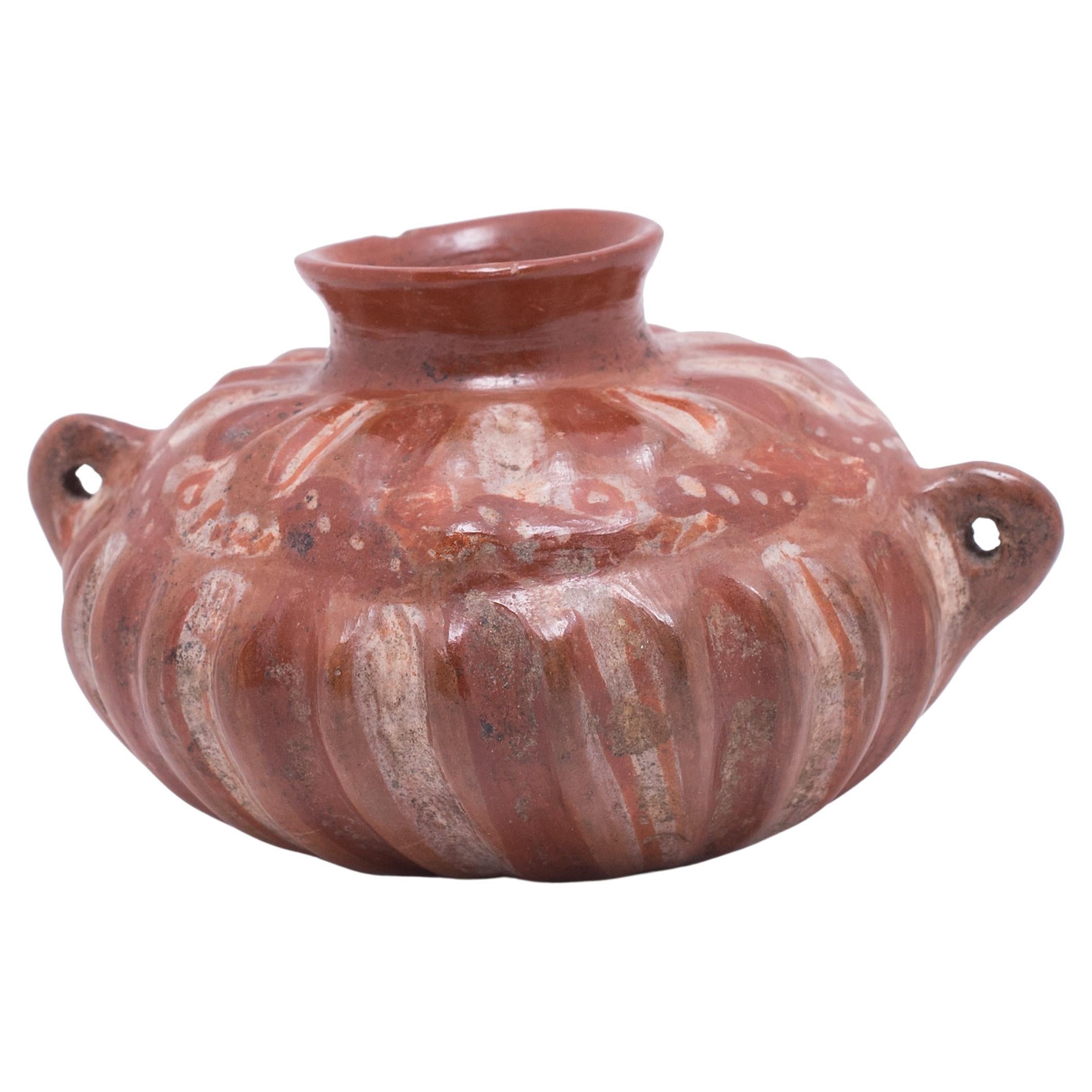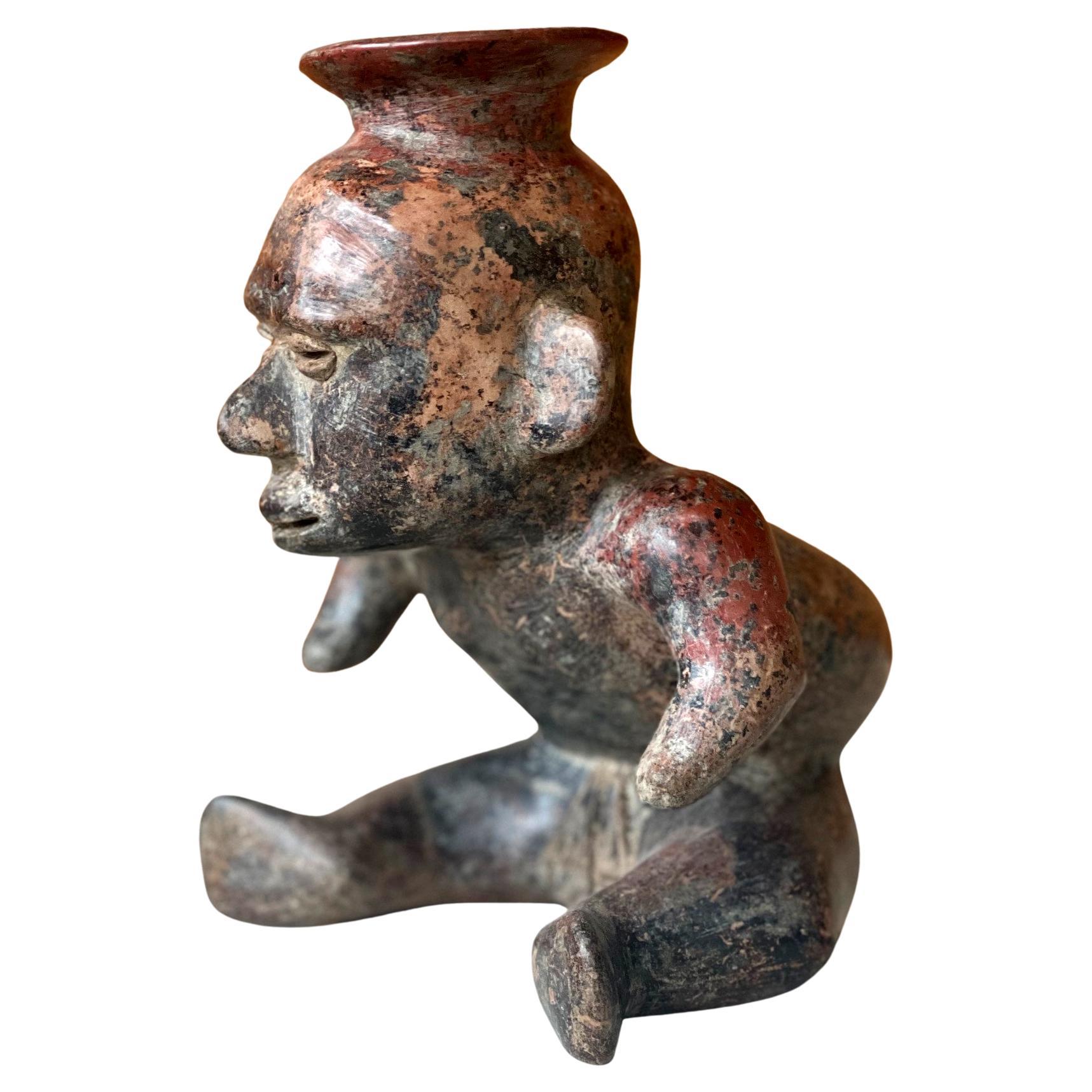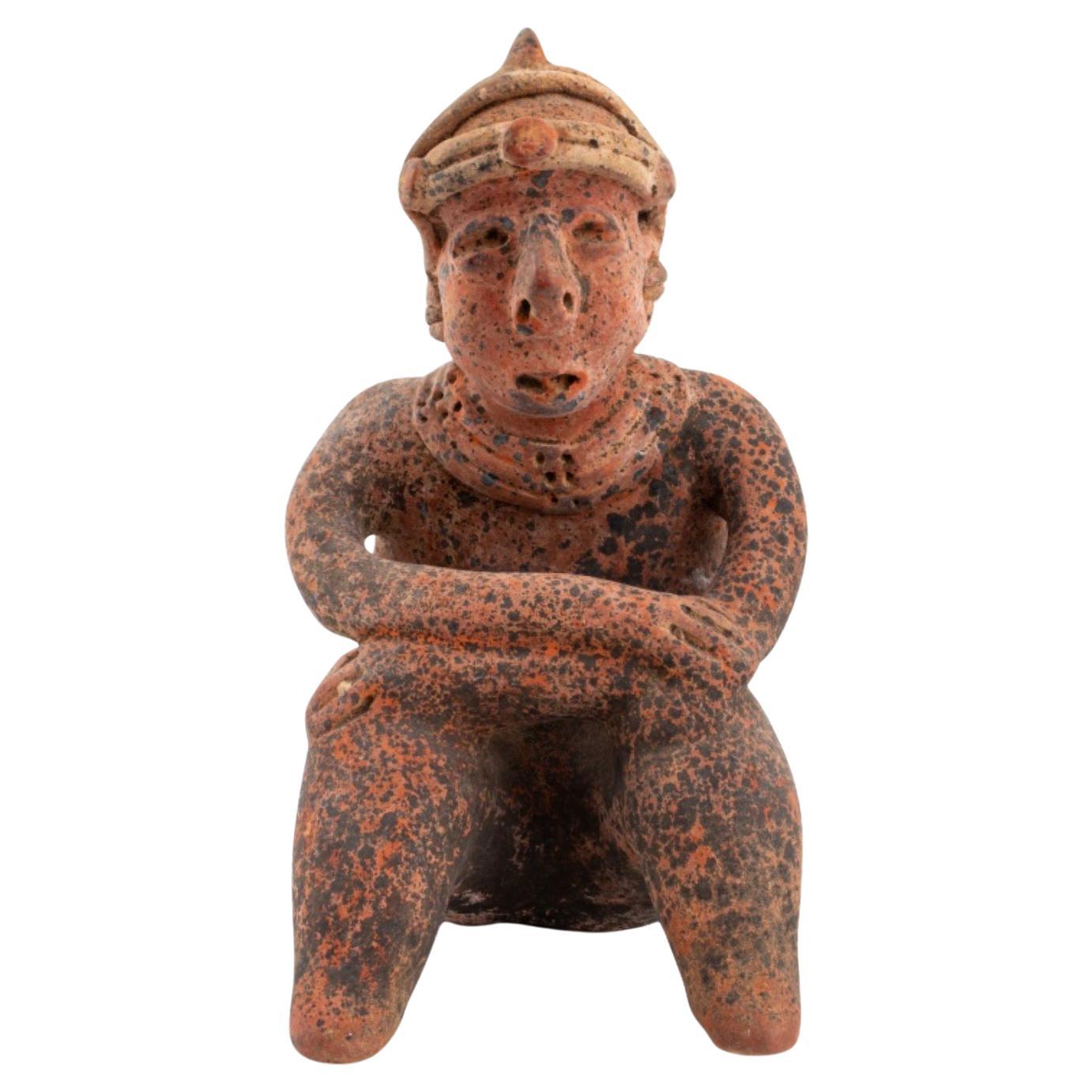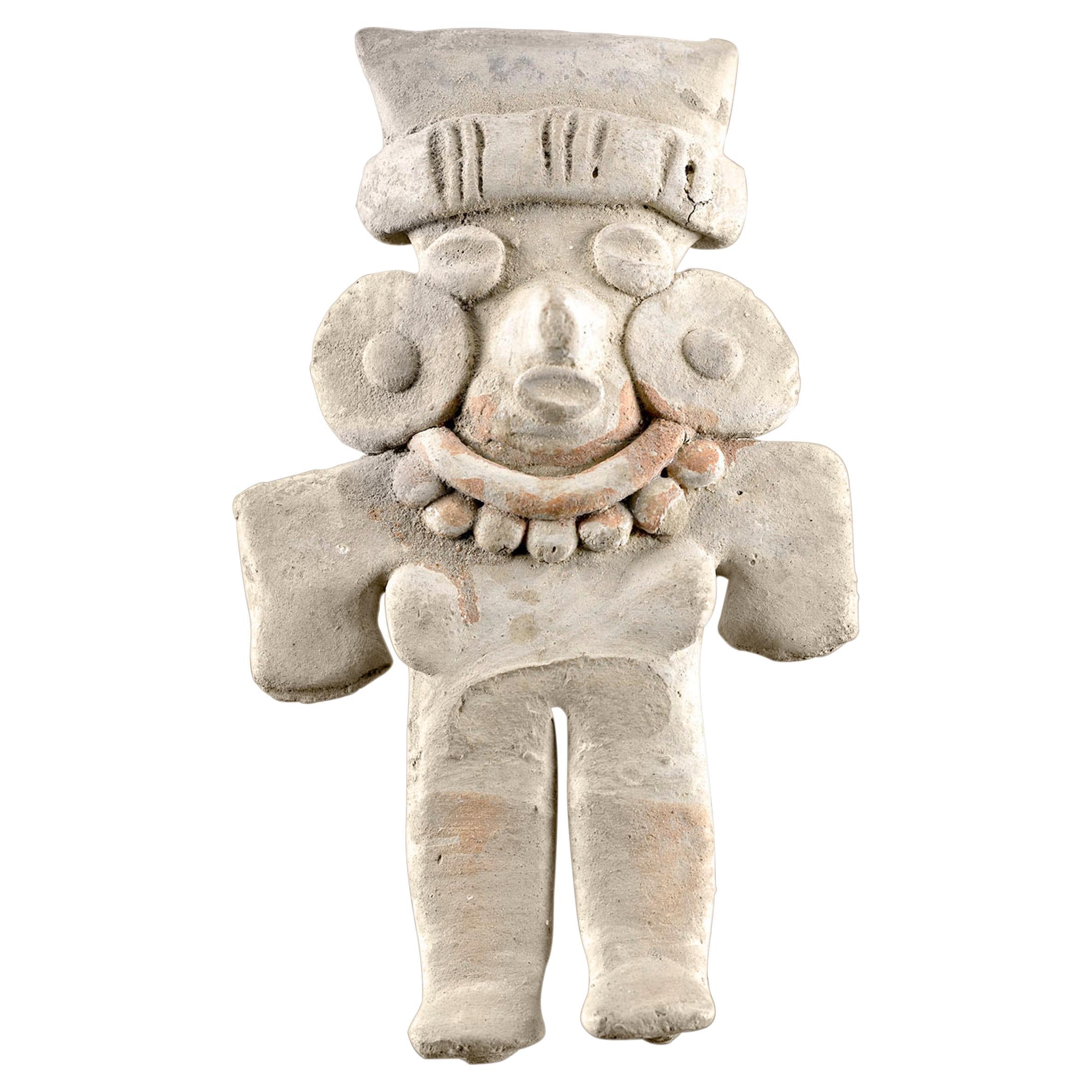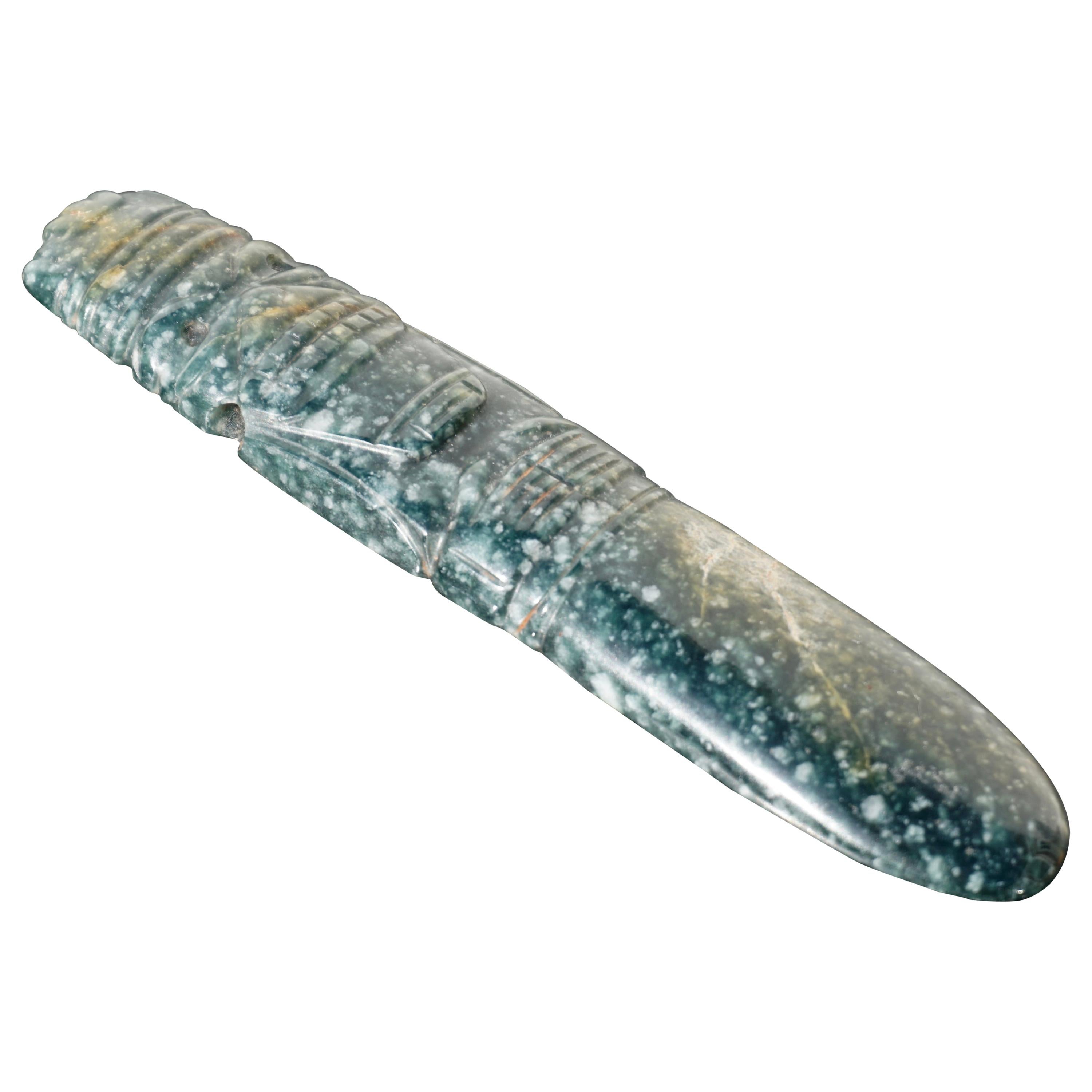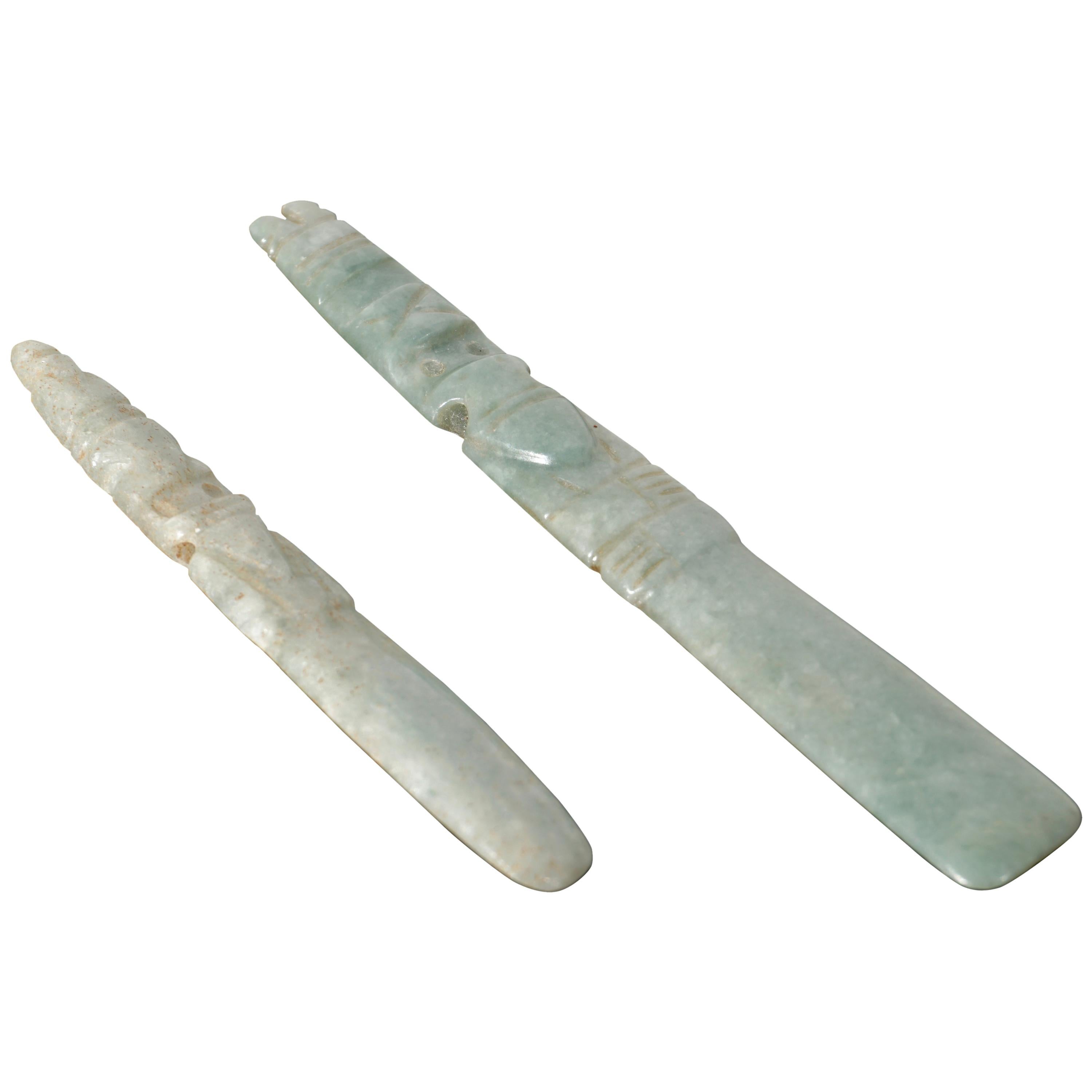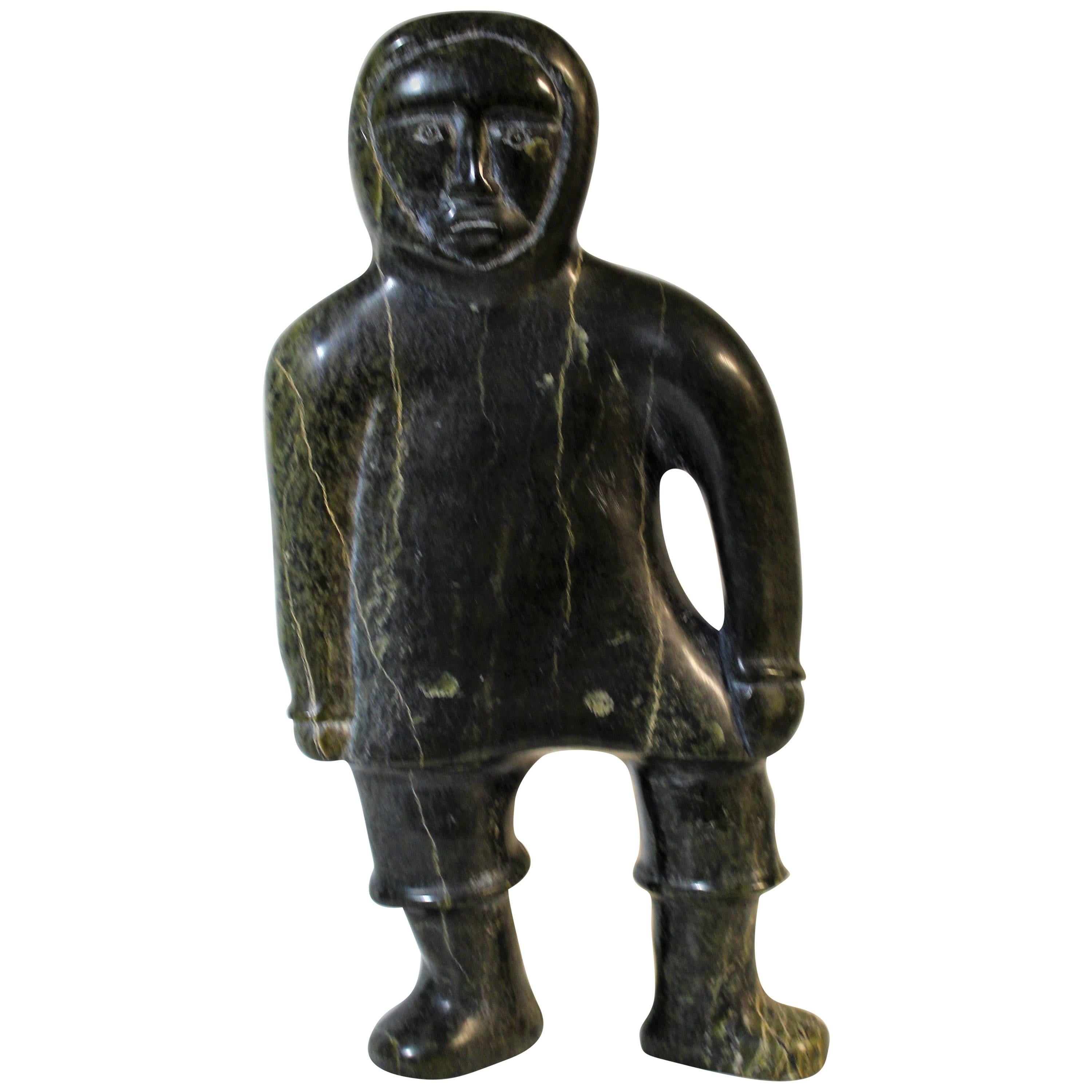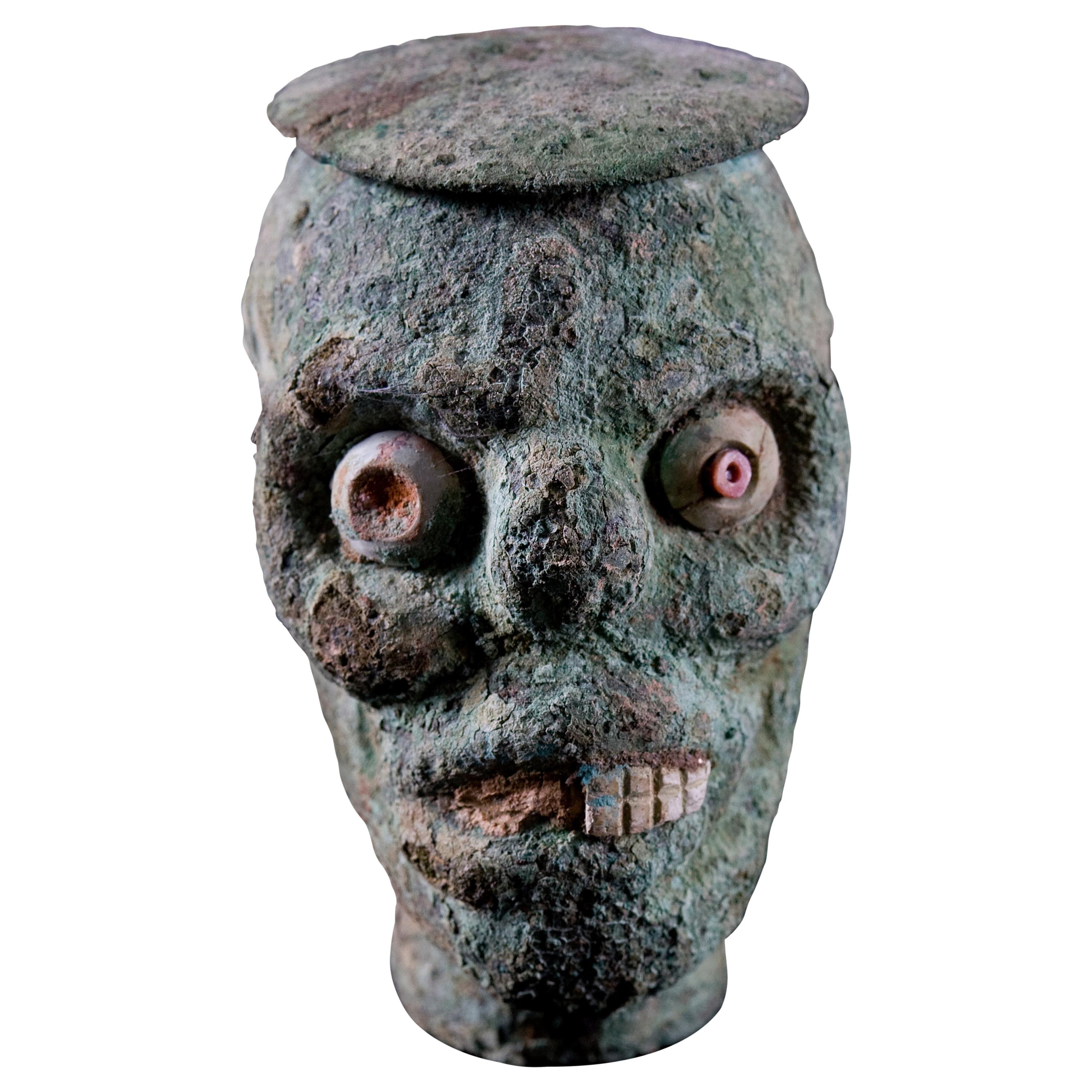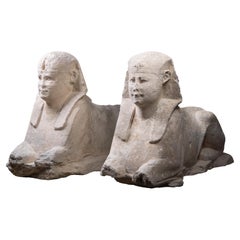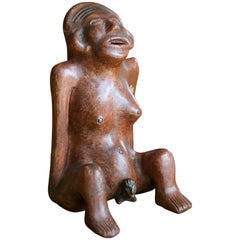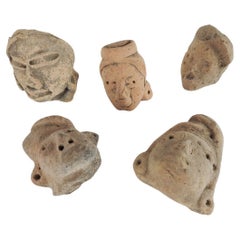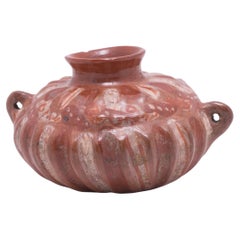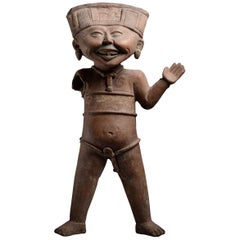
Seeger Collection Ancient Pre-Columbian Pottery Laughing Veracruz Figure, 550 AD
View Similar Items
Want more images or videos?
Request additional images or videos from the seller
1 of 7
Seeger Collection Ancient Pre-Columbian Pottery Laughing Veracruz Figure, 550 AD
About the Item
- Dimensions:Height: 18.5 in (46.99 cm)Diameter: 10.5 in (26.67 cm)
- Style:Pre-Columbian (Of the Period)
- Place of Origin:
- Period:
- Date of Manufacture:550 AD
- Condition:
- Seller Location:London, GB
- Reference Number:1stDibs: LU1052211798181
About the Seller
5.0
Recognized Seller
These prestigious sellers are industry leaders and represent the highest echelon for item quality and design.
Established in 2008
1stDibs seller since 2014
100 sales on 1stDibs
Typical response time: 7 hours
Associations
LAPADA - The Association of Arts & Antiques DealersInternational Confederation of Art and Antique Dealers' AssociationsThe British Antique Dealers' Association
More From This SellerView All
- Ancient Greek Corinthian HelmetLocated in London, GBCorinthian helmet with Bull Horns and Lotus Flower Decoration. Archaic Period, c.550-500 BC. Cast, hammered and incised bronze. An exceptionally well preserved example of one of the most iconic ancient Greek...Category
Antique 15th Century and Earlier European Classical Greek Mounted Objects
MaterialsBronze
- Ancient Silver Celtic Tetradrachm CoinLocated in London, GBCeltic ‘Dachreiter’ Tetradrachm Minted in Eastern Europe, circa 1st-2nd Century B.C. Silver A magnificent Celtic tetradrachm of the Dachreiter (“roof-rider”) type, minted by a C...Category
Antique 15th Century and Earlier Mounted Objects
MaterialsSilver
- Ancient Egyptian Monumental Temple SphinxesLocated in London, GBA pair of monumental limestone sphinxes of Pharaoh Nectanebo I, from the processional avenue of the Serapeum of Memphis, 30th Dynasty, circa 379 - 360 BC. The sphinxes of the Serapeum have captivated travellers since Roman times. However, despite their significance, they are conspicuously absent from the collections of most major museums. Indeed, their existence in private hands is so improbable, and their imitations so numerous, that the present sphinxes were assumed to be modern copies throughout their recent ownership history. Finally recognised and conserved after an extraordinary chance discovery at a garden furniture sale...Category
Antique 15th Century and Earlier Egyptian Egyptian Figurative Sculptures
MaterialsLimestone
- Ancient South Arabian Alabaster StatueLocated in London, GBSouth Arabian Calcite female figure 3rd Century BC to 1st century A.D. Calcite Alabaster height: 30.5 cm A magnificent alabaster female figure, a f...Category
Antique 15th Century and Earlier Yemeni Figurative Sculptures
MaterialsAlabaster
- Ancient South Arabian Alabaster InscriptionLocated in London, GBSouth Arabian Alabaster Inscription Calcite Alabaster circa 1st century A.D. ‘’Consequently, neither white marble of Paros nor any other stone which men admire can be compared with the precious stones of Arabia, since their whiteness is most brilliant, their weight the heaviest, and their smoothness leaves no room for other stones to surpass them.’’ - Diodorus Siculus, Library of History, Book II, 52.9 This inscription, finely worked on an alabaster tablet, is a remarkably well preserved example of Ancient South Arabian script, with its distinct bold, angular forms, written in the Qatabanic dialect - that is, the dialect spoken by the people of the kingdom of Qataban, which ruled much of modern day Yemen from the 7th Century B.C. to the 2nd Century A.D. The text, which reads: ‘[... ...]sa?d and Ma?add?i- / (of the lineage) of Hawfa- / She entrusted Anb- / against any malfeasance (which would remove it) from its place’ - indicates that it likely served to commemorate a temple offering. The quality of the script, incised so neatly into the surface of the alabaster, tells us that this piece was commissioned by somebody of considerable wealth and prestige, employing a scribe of equally considerable expertise. South Arabia was known throughout the ancient world for its incredible wealth - so much so that the Romans termed the region ‘Arabia Felix’ - literally, ‘Happy, or Fortunate, Arabia.’ That wealth was built largely on the trade of spices and incense, in which the Kingdom of Qataban played a major part. According to Pliny the Elder, this was the sole country through which frankincense could be exported, first being collected in the city of Shabwa, on the South Arabian coast, and from there travelling by camel up to Gaza, to be shipped all across the Mediterranean - not only that, but all growers of myrrh across Arabia were required to give a quarter of their yield to the king of the Qatabanians. As such, the kingdom became exceedingly rich and powerful, and Pliny goes on to tell us that ‘The nations of the Larendani and the Catabani, and the Gebanitæ [...] occupy a great number of towns, the largest of which are Nagia, and Thomna (the capital of Qataban) with sixty-five temples, a number which fully bespeaks its size.’ Because of the nature of its exports, frankincense in particular - the ‘sweat of of the gods’ according to the Egyptian Book of the Dead, and perhaps most famous as one of the three gifts brought to the newborn Christ - being closely associated with the divine, South Arabia’s reputation in antiquity was as a mysterious, almost sacred, and - crucially - extraordinarily wealthy region, at the very edge of the known world; in the words of Herodotus: ‘’Enough of marvels, and yet the land of Arabia gives off a scent as sweet as if divine.’’ This inscription invokes the protection of god Anbay, the judge-oracle of the chief god ‘Amm, who he served as an attendant. Much of what we know of the religious life of the ancient South Arabians comes to us from early Islamic texts, describing what is known in Islamic scholarship as ‘Jahiliyyah’ - the age before the advent of Islam in Arabia. What comes across in much of these texts is that these religious practices placed a great deal of emphasis on sacred stones, perhaps linked to the brilliance of the alabaster which is local to the region, and which a great many of the cult-objects produced in this time are made from. Hisham ibn-Al-Kalbi’s Book of Idols records: ‘’The Arabs were passionately fond of worshipping idols [...] Whenever a traveller stopped at a place or station in order to rest or spend the night, he would select for himself four stones, pick out the finest among them and adopt it as his god, and use the remaining three as supports for his cooking-pot.’’ This inscription was once in the collection of the intrepid British-Australian travel...Category
Antique 15th Century and Earlier Yemeni Abstract Sculptures
MaterialsAlabaster
- Ancient Greek Hellenistic Bronze Statuette of SatyrLocated in London, GBBeautifully cast statuette of a satyr, Greek, Hellenistic Period, 3rd-2nd Century BC, solid cast bronze The present work is a wonderful example of the finest Hellenistic style. The ...Category
Antique 15th Century and Earlier Greek Classical Greek Figurative Sculpt...
MaterialsBronze
You May Also Like
- Pre-Columbian Pottery Figure of a Woman Giving BirthLocated in Sofia, BGPre-Columbian pottery figure of a seated woman giving birth, with her hands behind the back. It was most probably used by a shaman to look for the benevol...Category
Antique 15th Century and Earlier Mexican Pre-Columbian Figurative Sculpt...
MaterialsTerracotta
- Pre Columbian Pottery Head Fragments Collection - Set of 5Located in Seguin, TXCollection of 5 Pre Columbian pottery heads. Largest is 2.5" x 2", much wear and chipping, although they are pretty tough for pottery.Category
Antique 15th Century and Earlier Central American Pre-Columbian Busts
MaterialsPottery
- Petite Pre-Columbian Chupícuaro Redware OllaLocated in Chicago, ILThis small olla jar is a beautiful example of Mesoamerican pottery, decorated with red, white, and orange slip in the style of Chupícuaro ware. Th...Category
Antique 15th Century and Earlier Central American Pre-Columbian Jars
MaterialsCeramic
- Ceramic Pre-Columbian Colima Hunchback Figure VesselLocated in Atlanta, GAA pre-Columbian figural vessel from West Mexico Colima culture (circa 300BC-400AD). Made of molded clay, the stoneware vessel depicts a seated hunchback...Category
Antique 15th Century and Earlier Mexican Pre-Columbian Figurative Sculpt...
MaterialsCeramic
- Pre-Columbian Nayarit Seated Figure Redware StatueLocated in New York, NYAncient pre-Columbian, Nayarit, Mexican, circa 100 BCE to 250 CE, hand-built ceramic pottery redware sculpture of a seated male figure with arms crossed and wearing a headdress and m...Category
Antique 15th Century and Earlier Pre-Columbian Abstract Sculptures
MaterialsCeramic, Pottery
- Pre-Columbian Chupicuaro FigureLocated in New Orleans, LAThis lovely Chupicuaro lady wears an elaborate coiffure, large ear plugs, and a beaded jade necklace, all of which were highly prized by Chupicuaro nobility. ...Category
Antique 15th Century and Earlier Figurative Sculptures
MaterialsCeramic
Recently Viewed
View AllMore Ways To Browse
Antique Mexican Pottery Pottery
Mexican Antique Pottery
Antique Mexican Pottery
Mesoamerican Pottery
Italian Life Size
Art Deco Mother
Carved Angel
Greek French Bronze
Art Deco Decorative Arts
Mother Art Deco
Marble Display Base
Figurative Plaster Sculptures
French Bronze Relief
Hand Painted Figurines
Italian Wood Figure
19th Century Marble Head
Carved Wood Stand Sculpture
Antique Objects List
